The transformation of Jupiter’s North Equatorial Belt in 2021-22
- 1British Astronomical Association, London, UK (jrogers11@btinternet.com)
- 2Association of Lunar and Planetary Observers-Japan, Tokyo, Japan
- 3Planetary Science Institute, Tucson, AZ, USA
- 4Independent scholar, Stuttgart, Germany
- 5Jet Propulsion Laboratory, California Institute of Technology, Pasadena, CA, USA
- 6JUPOS team
Introduction and Summary
The ongoing collaboration between amateur observers and the NASA JunoCam team is yielding insights into phenomena of Jupiter’s North Equatorial Belt (NEB), which in 2021 underwent rarely-seen, radical transformations in its appearance, activity, and jet speed. Many of these changes reprise what occurred in 2011-12, and we expect that the present phenomena will clarify how a ‘NEB Revival’ develops and how diverse they can be.
NEB Revivals occurred frequently until 1926; but since then, the belt has shown only more modest variations (‘NEB expansion events’), with rapid broadening to the north accompanied by internal convective (‘rifting’) activity. These have occurred every 3-5 years since 1987 [refs.1&4]. In one such cycle, in 2011-12, the visible dark belt became much narrower than usual then underwent the first NEB Revival since 1926 [refs.1-3]. Unfortunately, most of the activity occurred during solar conjunction.
In 2021, the visible belt has again shrunk to a narrow south component [NEB(S)]; very dark cyclonic ‘barges’ persist in the whitened northern NEB; and the NEBs jet has accelerated to ‘super-fast’ speeds as the usual NEBs dark formations (NEDFs or ‘hot spots’) have disappeared. But unlike 2011, there have been outbreaks of small bright plumes in the NEB(S), which perturb the adjacent belt.
Fading and quiescence of the belt
A typical NEB expansion event, with vigorous rifting, occurred in the first half of 2020. The activity subsided in Oct.-Dec. In 2021 April, the NEB had the classic appearance a year after its expansion event (Figure 1): the expanded NEBn edge was partially faded again, and a prominent array of anticyclonic white ovals (AWOs) and dark brown ‘barges’ had developed.
Then the NEB rapidly faded, and by late August 2021 it was very faint apart from the very narrow, dark reddish-brown NEB(S), and the dark barges. The belt was also very quiet, with none of the usual rifting, and the NEDFs had become very subdued.
JunoCam images confirmed that the scale of turbulence progressively diminished in the later stages of the NEB expansion event, to perijove 34 (PJ34, 2021 June): large rifts give way to smaller-scale, complex rifting texture, and then to very small eddies (Figure 2). This trend proceeded even further as the belt faded (Figure 2). At PJ36 and thereafter, the whitish cloud cover of the faded NEB has a strange texture of faint sinuous haze bands with little indication of the usual wind gradient.
Two types of low-contrast waves are also visible in some JunoCam images in the quiescent northern NEB from PJ34 to PJ39:
(i) Diffuse, roughly meridional bands at 12-16°N, with wavelengths ~1100-1450 km.
(ii) Mesoscale waves, with wavelengths <200 km.
Acceleration of the NEBs jet and disappearance of NEDFs
As the NEB rifting activity declined, by 2021 June most of the usual NEDFs had become ill-defined and less conspicuous. The last ones disappeared in August, and around that time, much faster tracks appeared on the JUPOS chart (Figure 3), representing smaller features on the NEBs. In Nov-Dec., fast speeds were seen all around the NEBs, with drift in L1 (DL1) ranging from -51 to -79 deg/30d (u = 130-143 m/s). Thus the NEBs jet has accelerated to ‘super-fast’ speed, as it did in 2011 [refs.1&2].
Bright outbreaks in NEB(S)
With the NEB generally quiescent, small short-lived localised convective outbreaks in the dark NEB(S) have attracted attention. These are quite common in normal circumstances but especially notable in 2021-22. The first two occurred in 2021 May, then others occurred roughly monthly from August, and more frequently in Dec. (Figure 4).
A typical outbreak begins with a small brilliant white spot in the NEB(S) at ~10°N. After about a week it extends tenuous white streaks, and the dark brown NEB(S) may become broadened following the plume, and an extremely methane-dark spot appears nearby (Figure 5). Initially the plume is retrograding (DL1 ≈ +1 to +2 deg/day), but then it moves south to the NEBs edge and becomes prograding (DL1 ≈ –1 to -2 deg/day).
All the outbreaks have occurred within a restricted longitude sector with DL1 ~ +0.4 to +1.7 deg/day (Figure 4). The latter speed would be appropriate for a disturbance in the observed latitude of ~10°N.
The visible appearance suggests that each outbreak begins with the eruption of a convective plume, and this leads to adjacent downdrafts (creating a clear deep hole that is methane-dark) and a disturbed wake (white streaks and reddish-brown belt). The methane-dark patches maintain the slow speed at 9°N, so they may be persistent waves like the usual NEDFs.
The JunoCam images at PJ38 and PJ39 fortunately captured all the types of feature in these outbreaks (Figure 6):
(i) Bright active outbreaks were a thick mass of bright white clouds, probably the top of powerful convective storms with hazes expanding from them. Wakes of whitish haze were seen, containing mesoscale waves at PJ39.
(ii) NEBs festoons with super-fast speed showed long streaks and cross-cutting orange haze bands, consistent with deep-seated features, although these aspects may not be diagnostic.
(iii) Methane-dark patches were viewed suboptimally but could also be deep features.
Such an outbreak initiated the NEB Revival in 2012 [ref.3]. We will report on developments during 2022.
Acknowledgements: Some of this research was funded by NASA. A portion of this was distributed to the Jet Propulsion Laboratory, California Institute of Technology.
References:
1. Rogers JH (2019) J.Brit.Astron.Assoc. 129, 13-26: ‘Jupiter’s North Equatorial Belt and Jet: I. Cyclic expansions and planetary waves.’
2. ibid. pp.94-102: ‘II. Acceleration of the jet and the NEB Fade in 2011-12.’
3. Rogers JH & Adamoli G (2019) ibid. pp. 158-169. ‘III. The ‘great northern upheaval’ in 2012.’
[Available at: https://britastro.org/node/15627 (preprints & abstracts) & https://britastro.org/node/7229 (published PDFs).]
4. Rogers JH et al. (2019) ‘The cyclic expansions of Jupiter’s North Equatorial Belt in 2015-2017.’ EPSC Abstracts Vol. 13, EPSC-DPS2019-302 (2019).
Full details are available on the BAA Jupiter Section web site and the ALPO-Japan web site.
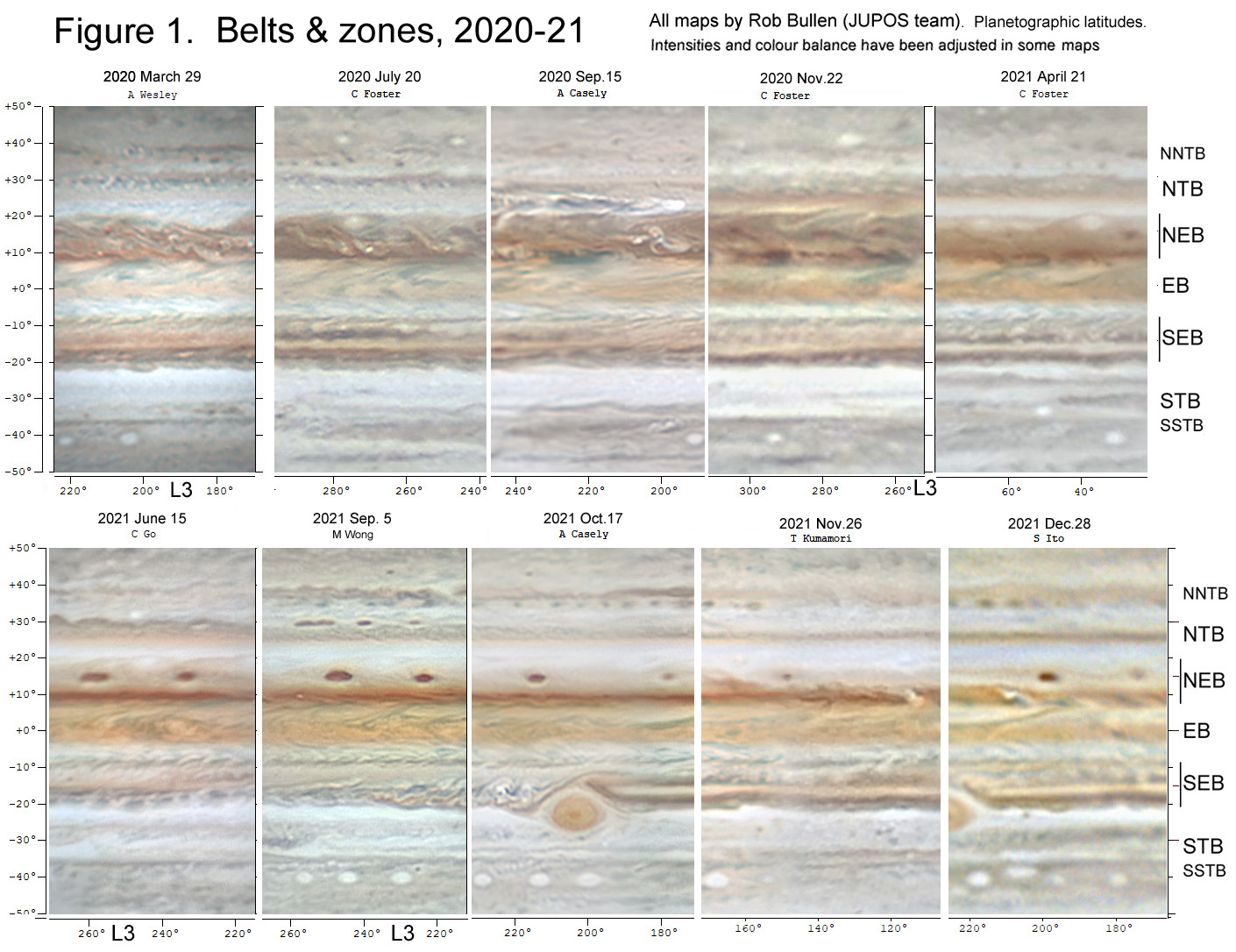
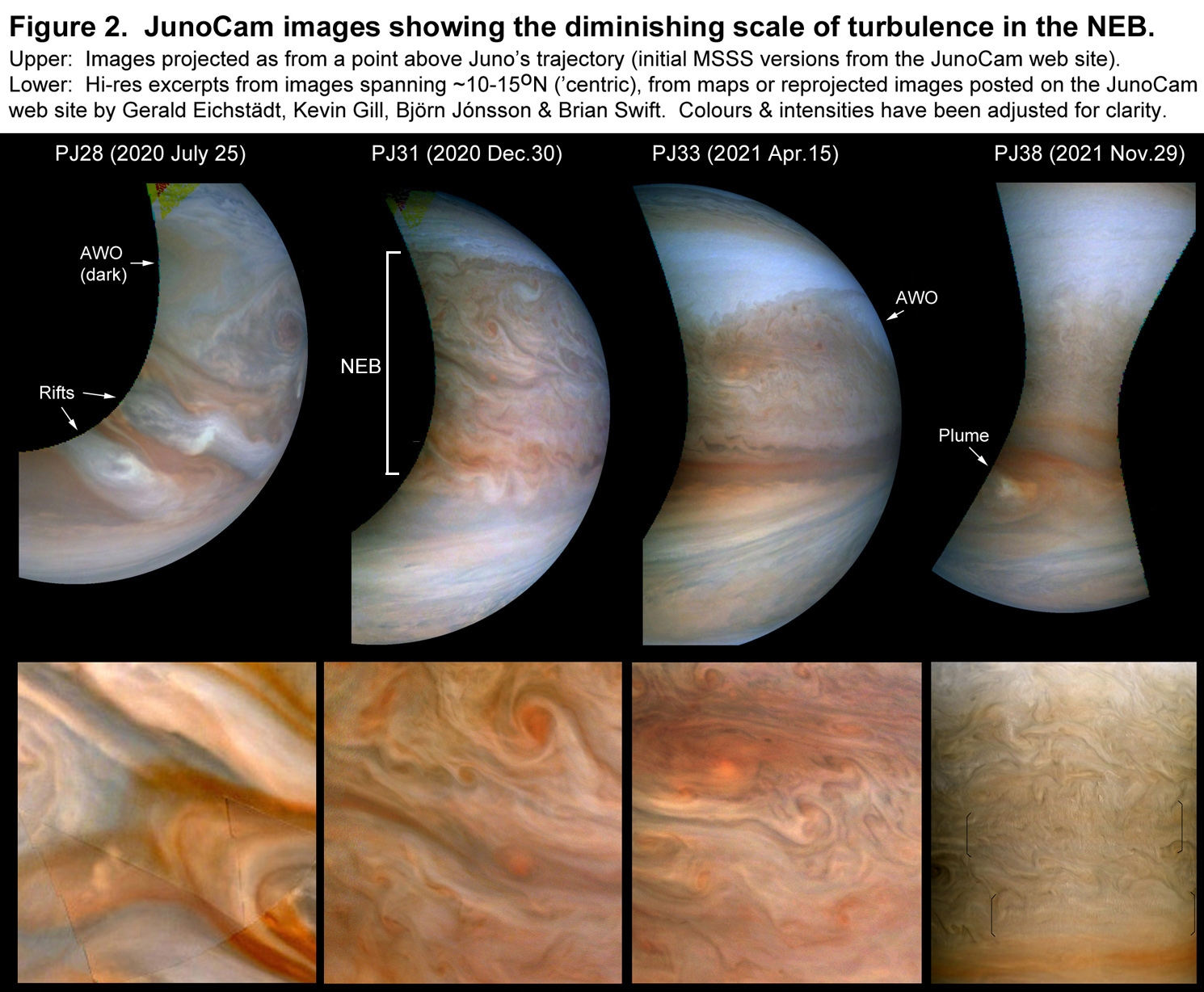
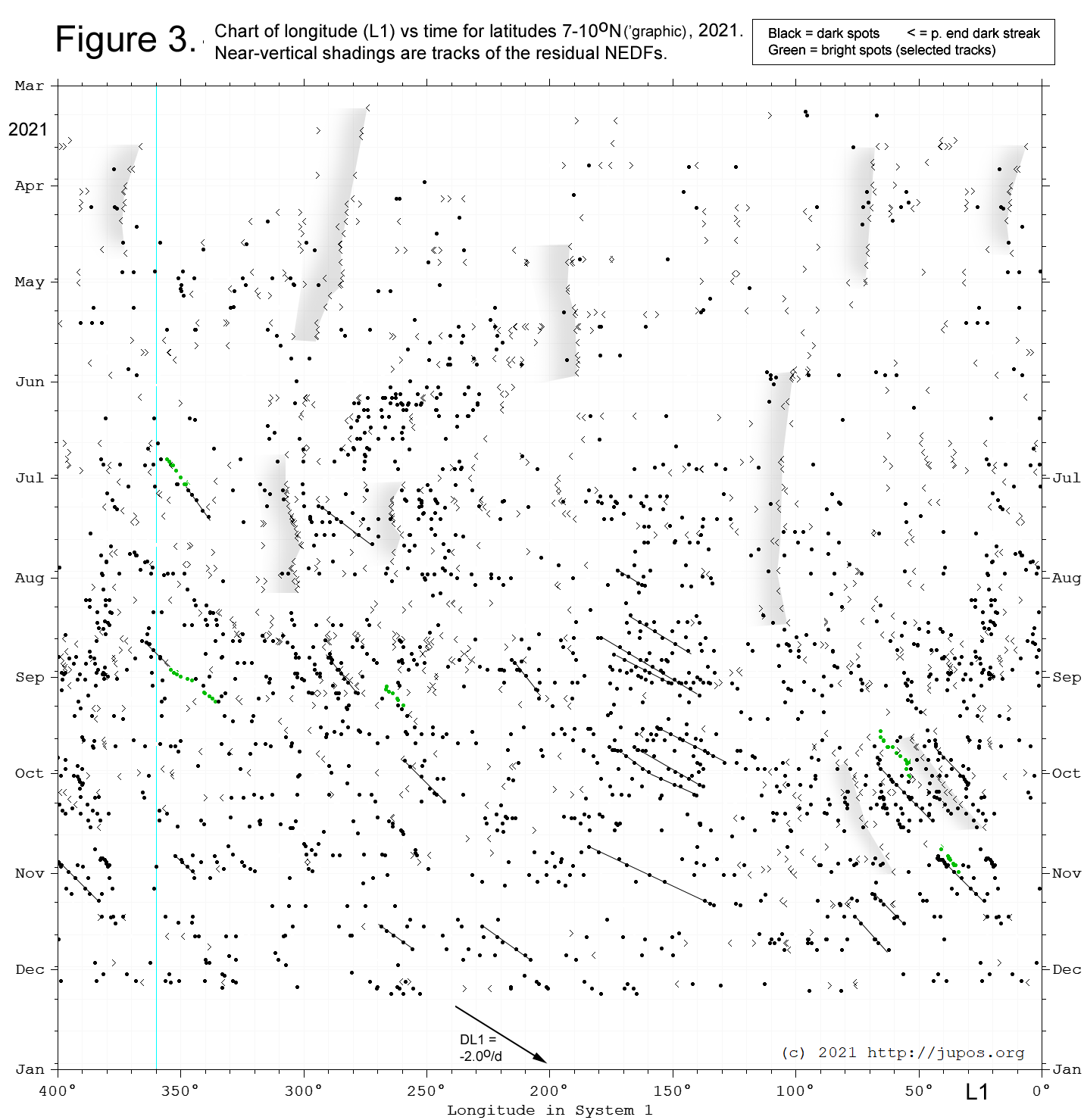
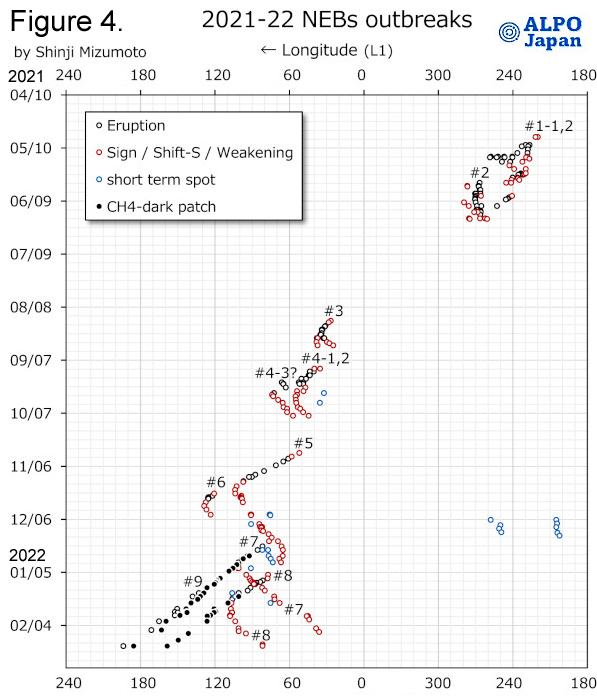
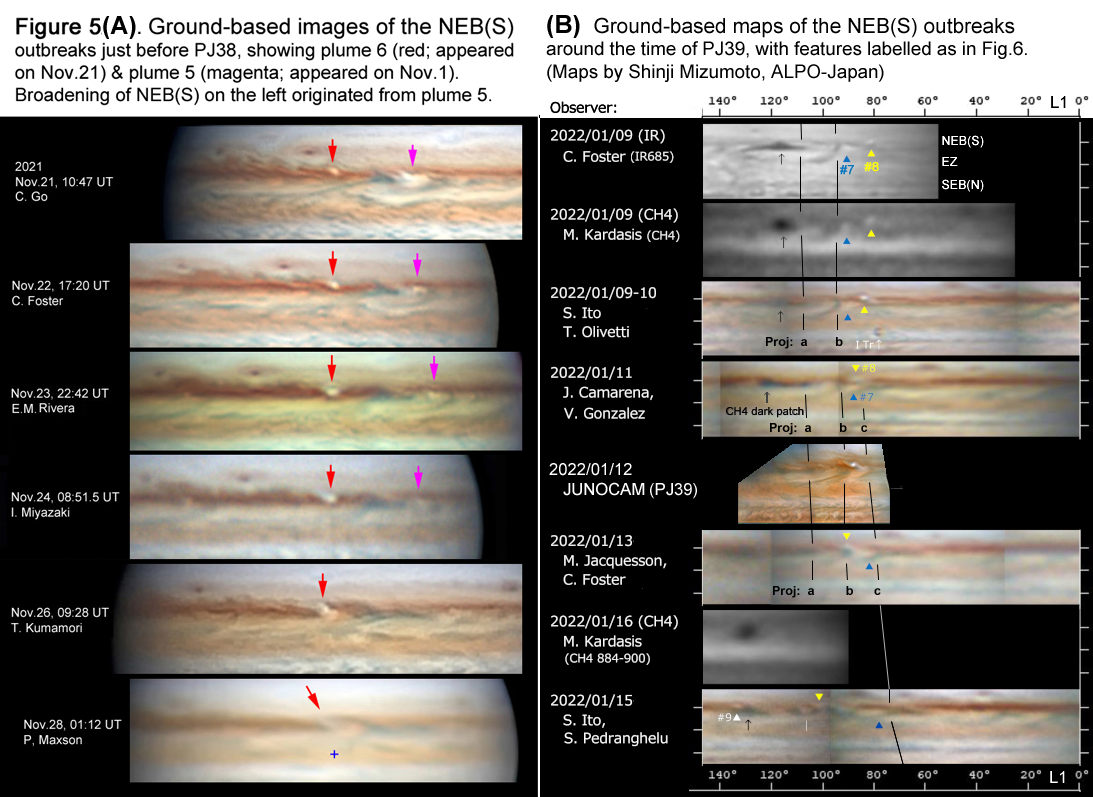
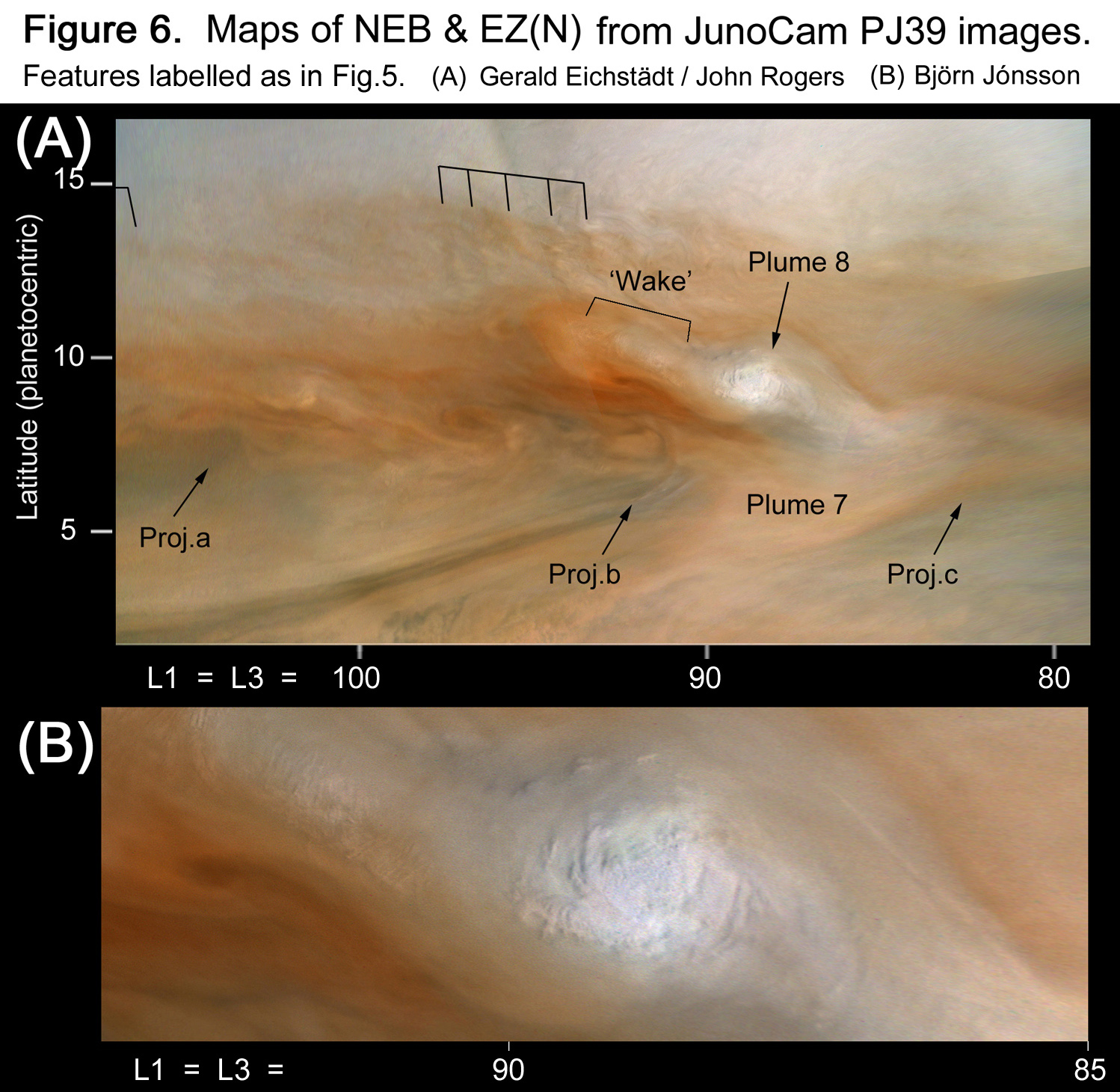
How to cite: Rogers, J., Mizumoto, S., Hansen, C., Eichstädt, G., Orton, G., Momary, T., Adamoli, G., Bullen, R., Jacquesson, M., and Mettig, H.-J.: The transformation of Jupiter’s North Equatorial Belt in 2021-22, Europlanet Science Congress 2022, Granada, Spain, 18–23 Sep 2022, EPSC2022-17, https://doi.org/10.5194/epsc2022-17, 2022.

